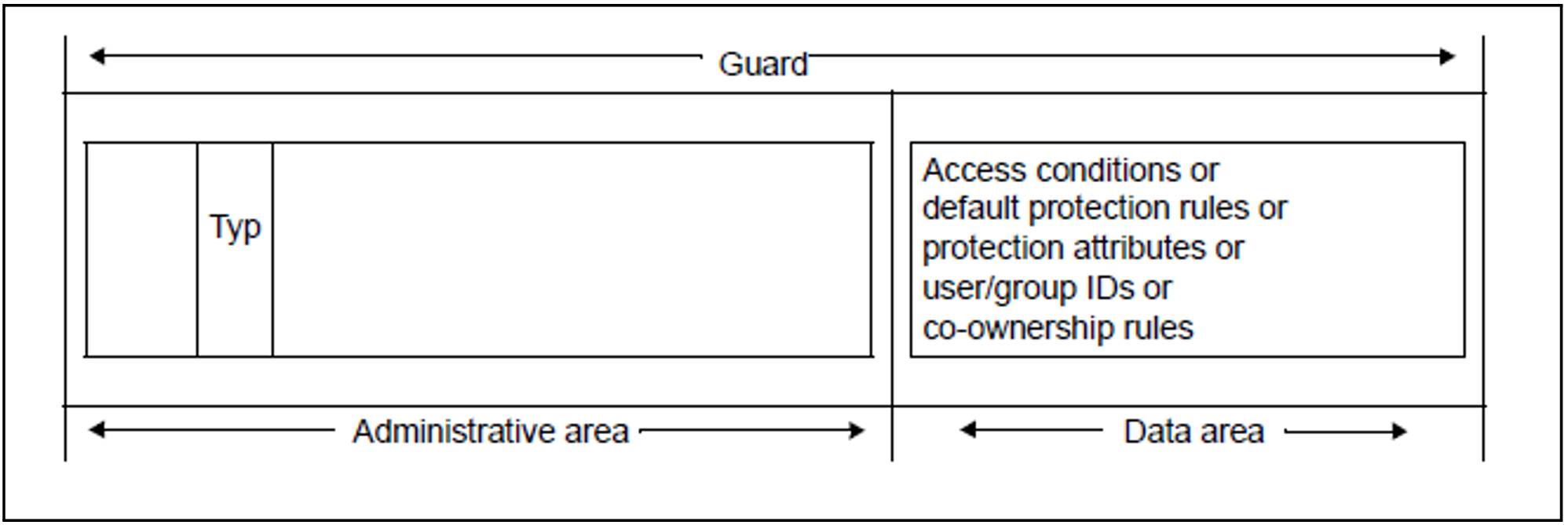The data part of a guard contains information about the various protection mechanisms:
Depending on the guard type in the administrative area, the data part can contain the following entries:
Guard type | Entry |
UNDEF | Empty container which does not yet contain any protection mechanism. |
STDAC | Access conditions. These consist of the date, time, day of the week, privilege of accessing task and name of an accessing program which the specified subjects (USER, GROUP, OTHERS, ALL-USERS) must satisfy. |
DEFAULTP | Rules for default protection. These consist of the rule name, object name, name of an attribute guard and, as an option for system administrators only, the name of a user ID guard. |
DEFPATTR | Protection attributes. These consist of ACCESS, USER-ACCESS, BASIC-ACL, GUARDS, READ-/WRITE-/EXEC-PASSWORD, DESTROY-BY-DELETE, SPACE-RELEASE-LOCK, EXPIRATION-DATE and FREE-FOR-DELETION. |
DEFPUID | User and user group IDs for the unique object name assignment as part of pubset-global default protection (for system administration only). |
COOWNERP | Rules for co-owner protection. These consist of the rule name, object name, name of a condition guard and specific access authorization of the user. |
Table 10: Guard types and their meanings

